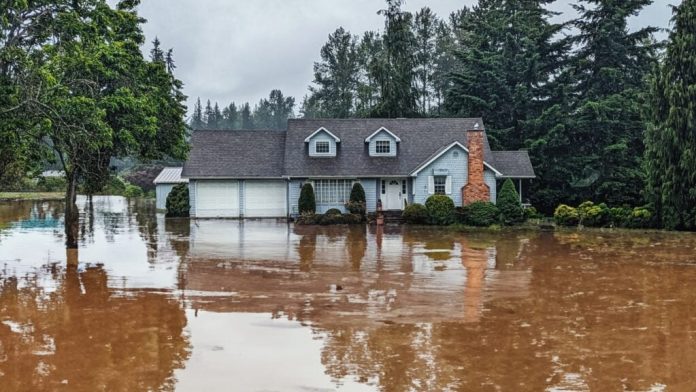Climate change has had a significant impact on the U.S. real estate market, prompting buyers to not only consider factors like quality of life and affordability but also climate risks before making a purchase.
Boost your real estate success with Inman On Tour: Nashville! Connect with industry experts and top speakers to gain valuable insights, cutting-edge strategies, and important connections. Take your business to the next level and achieve your goals with the magic of Music City. Register now.
Climate change has disrupted the U.S. real estate market, with homebuyers now factoring in climate risks alongside their desire for a better quality of life and affordable housing.
Extreme weather events are causing insurance costs and property values to soar in areas that were once considered safe, according to a recent study by climate research company First Street. This shift in climate dynamics could potentially lead to a loss of nearly $1.5 trillion in real estate value over the next three decades.
The report predicts that “over 55 million Americans will voluntarily relocate within the U.S. to areas less vulnerable to climate risks by 2055, beginning with 5.2 million in 2025.”
Traditionally, people gravitated towards suburban areas near major cities and Sun Belt states like Texas and Florida in search of warmer weather and lower living costs. However, these regions are now experiencing severe climate impacts, making them riskier and more expensive to insure.
State Farm recently requested an average rate increase of 22 percent from the California Department of Insurance to cope with the aftermath of wildfires in LA, stating that such measures are necessary to prevent a dire situation. The insurer has already paid out over $1 billion in claims and received more than 8,700 filings since February 1.
In May 2023, State Farm announced that it would no longer issue new policies, and less than a year later, they opted not to renew 30,000 homeowners’ policies due to perceived “catastrophic risk.”
Coastal regions are grappling with rising sea levels, while inland areas are facing more severe heatwaves, droughts, and floods. The Sun Belt experienced a major blow in 2024, with 27 billion-dollar weather disasters causing over $182 billion in damages.
Texas bore the brunt with 20 major disasters in 2024, while Florida and North Carolina, states outside the Sun Belt, also saw significant damage from severe storms and tropical cyclones.
Despite the risks posed by climate change, many Americans are still choosing to move to disaster-prone areas, particularly Texas and Florida. In 2023, counties with high wildfire risks, especially in Texas, welcomed over 63,000 new residents, while flood-prone counties, including those in Florida, saw an influx of 16,000 people, as reported by Redfin.
This trend is somewhat surprising given that Texas, Florida, and California have borne over 40 percent of the country’s $2.8 trillion in disaster-related costs since 1980. It underscores how factors like home affordability and job opportunities often outweigh climate concerns for many buyers.
With the growing climate risks, the costs of homeownership are also on the rise. Insurance premiums are increasing, especially in cities like Miami (322 percent), Jacksonville (226 percent), and Tampa (213 percent).
Some insurers are even pulling out of high-risk states altogether. Prior to the recent wildfires in Los Angeles, several insurers had already ceased offering coverage, leaving homeowners with limited options. First Street estimates that if insurance pricing were fully adjusted for risk, premiums could spike by 29.4 percent by 2055.
Alongside the surge in insurance premiums, higher utility bills and increased maintenance costs resulting from climate change are making homeownership more financially burdensome overall.
Property values in high-risk areas could start to decline while regions resistant to climate impacts, like parts of the Midwest such as Dane County, Wisconsin, and Franklin County, Ohio, are projected to remain stable.
While it’s challenging to predict long-term migration patterns, one thing remains clear: Americans are increasingly considering climate risks when deciding where to live.
“We are witnessing a heightened response to climate exposure, and this is likely due to the frequency and severity of climate-related events at this moment in time,” said Jeremy Porter, head of climate implications research at First Street, as reported by USA Today.
Access to climate risk data is becoming a crucial part of the home buying process, according to Porter. As awareness grows, so will the impact of climate change on where and how Americans decide to establish their lives.
Email Richelle Hammiel




